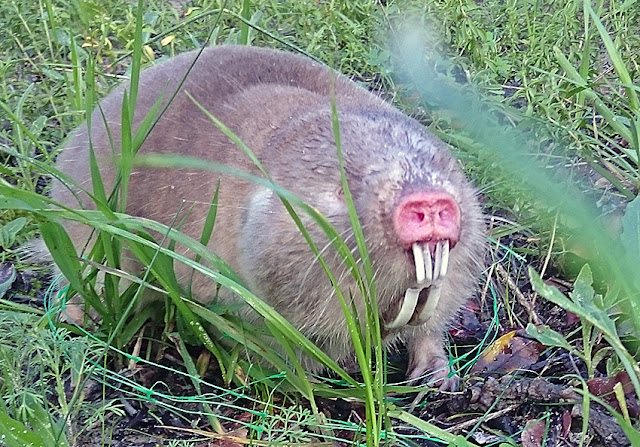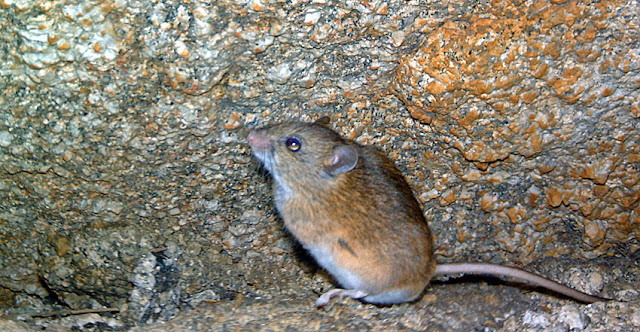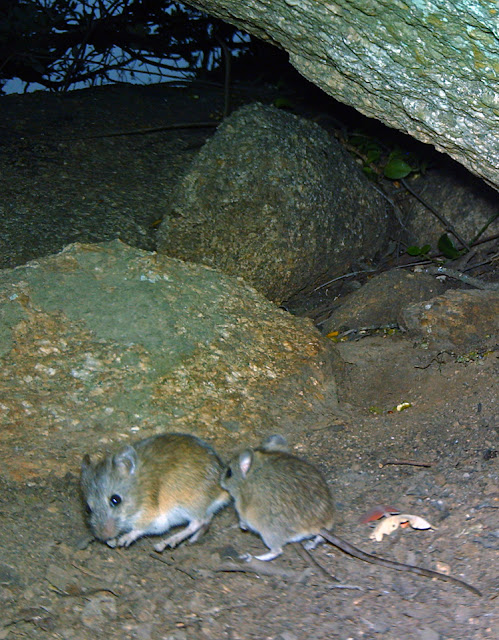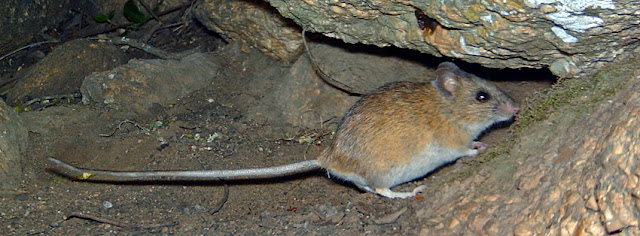I've been fortunate to get a good number of camera trap observations for both Duiker and Grysbok at Paarl Mountain Nature Reserve. It provides a great opportunity to compare these two antelope species.
 |
| The Common Duiker (Duiker - Sylvicapra grimmia) at Paarl are eager to help |
Lets start by comparing the occurrence pattern for both species on the reserve. It is much easier to compare Duiker and Grysbok than it is to compare something like Duiker and Small Gray Mongoose, because if the camera trap is setup to capture photos of a Duiker then it will also capture a Grysbok, but not necessarily a mongoose.
From the abundance maps it is clear that the two species overlap throughout most of the reserve. But there are some small differences: The Duiker is a bit more strongly associated with the fire breaks and the Grysbok seem to penetrate the think vegetation more easily. The big difference is the patch at the south-east of the reserve. This area burnt a few years ago and the vegetation in the area is still fairly short. I suspect that the Grysbok is quicker to recolonize such areas. It will be interesting to see whether the same area contain Duiker a few years from now when the vegetation is more dense and mature.
The problem with the using the occurrence map, above as a "distribution map" is that not all areas of the reserve was sampled to the same degree. For example the far south was not sampled at all. To confirm that there is a relationship between Duiker and Grysbok observations I decided to evaluate the data as well.
 |
| A Cape Francolin (Kaapse Fisant - Pternistis capensis) a bit unsure about this whole analysis business |
I compared the number of times Duiker, Grysbok and Cape Francolin were observed within two days of each other and in the same general area. I included Cape Francolin because it is another very common species and will be captured by camera traps that are setup to targeting the antelope species.
As expected the Duiker and Grysbok show a strong relationship, but surprisingly there is a big difference between how the Cape Francolin relates to the two antelope species. I decided to pull up the abundance map for the Cape Francolin, suspecting that it might illuminate why there is such a discrepancy.
The map explains suggests that both the Grysbok and Cape Francolin are present in the recently burnt area where the Duiker is still absent. The Cape Francolin also shows the trend of being less strongly linked to the fire breaks and readily penetrating the thinly vegetated areas.
 |
| Cape Grysbok (Kaapse Grysbok - Raphicerus melanotis) helping capture data during the night shift |
The males of both Duiker and Grysbok are the only ones to have horns, making it possible to determine the gender. Both species show the same common trend: The males are either more active or more common when compared to the females. My feeling is that they are more active and not necessarily more common.
I also like to compare the day-night activity patterns of the species. Again both species show more or less the same pattern.
I don't use the actual time, but instead like to use a time of day category. The reason for this is because the length of the day changes a lot between winter and summer. So I devised a way of splitting the day and night into categories based on the time when sunrise and sunset occurs. Doing so shows a subtle difference between these two species: Although the trend remains more or less the same, the Grysbok show an odd spike in activity during the late afternoon. It seems like they become active sooner before sunset and remain active longer after sunrise.
I also like to compare the possible influence the phase of the moon might have on the species. Both species show a very similar trend, but again there are minor differences: For some reason Duiker activity is surprisingly low on nights with a dark moon. The Grysbok pattern follows the expected baseline pattern very well with a slight increase towards the start of the full moon cycle.
The last comparison I want to make in this blog post is the chance of getting subsequent visits of the same species during one day-night cycle. Although the Grysbok is the more common species it is the Duiker that is more likely to have multiple observations in the same day-night cycle.
I really enjoy doing these analysis, and I hope to a couple more of these of the next month or two.











































